#Pilgrimage To The Source Of Art
Text




to the ends of the earth
by Lotus (@gaylotusthatexists)
Relationship: Scar/Grian
Rating: Teen and Up Audiences
Word count: 105k
Summary:
Scar let out a heavy sigh, starting to push away from his desk before pausing for a moment, shaking his head, then leaning forward again, his quill continuing to glide along the parchment. He wasn’t ready yet, surely whoever had come to collect him could wait a few minutes longer. Or a few hours. Or a few years, actually.
It wasn’t as if he didn’t want to go on this trip. He knew just how important it was, and how privileged he was that he got to go on it, but-
Well, it wasn’t quite what he’d been hoping for. For a powerful mage such as himself (or, well - future powerful mage, that is) this was perhaps the most important journey he’d make in his lifetime. His pilgrimage to the Crystal Fountain, the source of magic itself, the very journey he’d spent his entire life working towards. He should be excited. He was excited.
At least, he had been, until he found out that he wasn’t to make the journey alone.
Or, in which the vex prince sets out on a magical journey of a lifetime, and an unassuming avian knight is dragged along for the ride.
(Or, in which strangers find love in the unlikeliest of places.)
Read to the ends of the earth on AO3!
This work has multiple chapters and will be finished by March 31!
Full art pieces will be posted with their associated chapters!
Check out the amazing artists for this team:
isjasz (@isjasz)
Mellon (@mellioops)
Toby (@minecraftbed)
VesperionNox (@vesperionnox):
Twitter
Instagram
YouTube
453 notes
·
View notes
Text


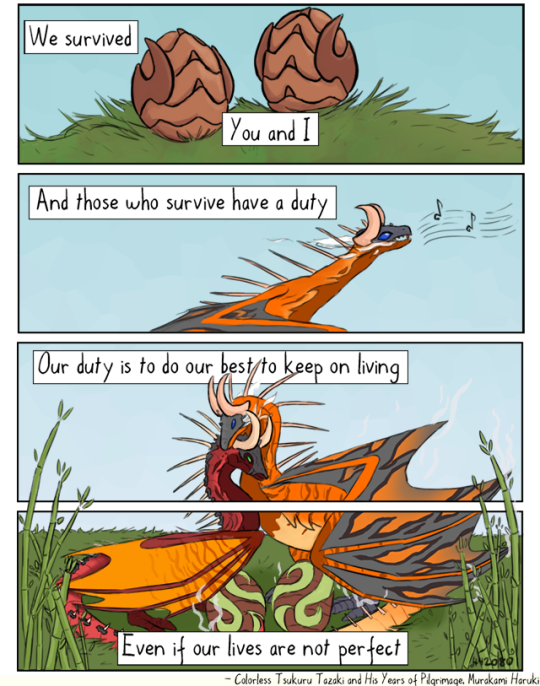
Allegro #57409469 and Legato #57409404. big wife and small husband. sketched and lined in March-April 2020, finished around June-July of the same year.
image descriptions under the cut.
[image 1: Allegro, a water-eyed female-pose banescale with carrot orange savannah, charcoal tear, and orca wraith genes. /end id]
[image 2: Legato, a nature-eyed male pose banescale with berry red savannah, saffron orange safari, and lead skeletal genes. /end id]
[image 3: a digital art 4-panel comic page. each panel is the same size and makes up a horizontal rectangle. the first shows two of the clanbound banescale eggs, brown with ridges and hornlike structures, sitting on grass with a blue sky background. superimposed are two boxes which read 'We survived' and 'You and I'. The second panel shows a young Allegro from the chest up, the top half of a wing is visible. She is stretching towards the top right and some lines and notes like sheet music indicate she is singing. A text box that reads 'And those who survive have a duty' sits in the top left of the panel. The third and fourth panels are sections of the same scene, two banescales - Allegro and Legato, a smaller banescale, cuddling with their heads together in the third panel. a textbox that sits partially behind their heads reads 'Our duty is to do our best to keep on living'. the final panel shows the bottom half of their bodies, and between their feet are two eggs which look like a mix of the banescale ones and unhatched wind eggs, brown ridged with green swirls. some bamboo sprouts up from the bottom corners and reach up into the third panel. superimposed at the bottom of the fourth panel is a textbox which reads 'Even if our lives are not perfect'. At the bottom of the page is an attribution that sources the text as a quote from Colorless Tsukuru Tazaki and His Years of Pilgrimage, by Haruki Murakami." /end id]
212 notes
·
View notes
Text
Astrology observations: LONG DRIVE EDITION 🛣️
LET'S GOOOOOOO!!! 🏁 🚘
🚋 This post is dedicated to my prominent mercury and third house placement folks who love their long drives, cars, and road trips.

🚋 Uranus/Aquarius in 3rd house ppl may own a car which may have a unique aspect to it, like the model of the car has been stopped being sold by the company, not many people may buy it, it may be electrical, etc.
🚋 With Uranus in 3rd house, you may also go on sudden, spontaneous trips.

🚋 Okay but my condolences to the Sagittarius folks who love traveling but also have Virgo placements (especially if they are squaring), y'all how are your motion sickness and stomach problems while traveling 🫣, mine ain't better.
🚋 Growing up, folks with Sagittarius moon/ Jupiter conj Moon/ Jupiter in the 4th house may have traveled to a lot of spiritual and pilgrimage places with their parents.
🚋 Capricorn/Cancer/Taurus placements for what I've observed is that they want to travel slowly, like if going on a long drive they are the ones who make sure the ride is comfortable by stopping by food stations/ scenery checkpoints etc, they ain't hurrying that's why they are my fav travel buddies.

🚋 Pisces/ 12th house placements/Neptune in the 3rd house 🤝 taking a good ass nap while sitting on the backseat. Ik ppl who have this placement who'll legit not sleep throughout the night just so they could sleep while traveling XD.
🚋 Gemini placements are a great source of entertainment while traveling XD. They've got everything. They'll make jokes and be funny all the time but also if you're curious about the place they'll have the facts up their sleeves.

🚋 Leo, Taurus and Libra placements 🤝 shopping, especially the cutesy souvenirs.
🚋About pilgrimage and spiritual sanctuaries, I've noticed that Capricorn placements also love to visit them, especially when they get older.
🚋 Libra, Scorpio, Cancer, and Pisces placements 🤝 daydreaming/reminiscing while listening to music and looking outside the window.
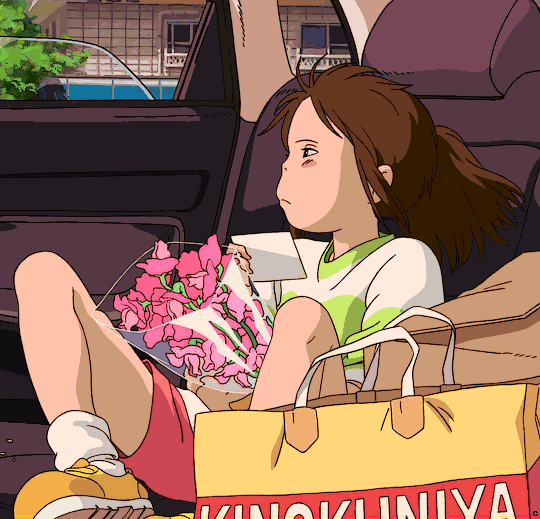
🚋 If you wanna dine the right place, I think it is quite well known by now to take Virgo, Taurus or Sagittarius folk with ya. They know and have it well researched.
🚋 Aries/prominent Mars placements (especially in the 3rd house)🤝 loving that adrenaline rush from driving on rocky terrains and fast driving on the highways.

BONUS: Some asteroids associated with gods of travel and my take on em 🛣️
Ganesa (2415) - Hindu God of wealth and wisdom. Also known to be the "remover of obstacles" that's why he is prayed for before embarking on a new journey be it literally or metaphorically. Having it prominent in your chart may indicate where you'll be successful in your ventures, where you may have a lot of luck and wisdom by your side, and where you may gain wealth.Where new beginnings will be auspicious for you.
Hermes (69230) - Many consider this Greek god as the "Jack-of-all-trades" as he is considered to be the patron god of travel, art, invention, trade, literature, and also of thieves. Planet Mercury is associated with this deity hence having it prominent in your chart may indicate that you may also be a jack-of-all-trades, clever, cunning, and intelligent. Having it prominent in your chart may also indicate you may get away from the troubles and consequences of your actions by using your wit easily.
Vibilia (144) - Roman goddess of the journey, "the right way", short and long trips as well as roads. Having it prominent in your chart may indicate what inspires you to travel, your spiritual/symbolic or literal journey. Being prominent in solar return may be an indication of travel that year.
Adeona (145) - The Roman goddess of safe return, she is also considered the protector of children who travel to come back home (isn't that wholesome?), and also the goddess of homecoming. Having it wherever in your chart may indicate aspects of your life that you return to for comfort and safety. What aspects of your life are where you return and settle in after completing all your endeavors.

#astro observations#astrology#astrology community#astro community#astrology observations#astrological observations#astrology notes#asteroid astrology#asteroid#travel asteroids#astrovations#astro notes#astrology placements#astrology tumblr#astrology aspects#natal chart#travel#astro placements
880 notes
·
View notes
Text
"PINWHEEL IS TRYING TO BRING BACK HIS FAMILY": THE WORST AND DUMBEST THEORY OF ALL TIME
we all know and love gravelord nito, right. he's a big jumble of skellingtons covered by a robe of bad vibes. he's not dead, he's just "sleep[ing] deep within the Giant Catacombs, quietly overseeing all death". nito, first of the dead, is weak to fire. nito discovered his flame and burned himself to death making him the first loser in recorded history.


and we know pinwheel, the poorly named (look i know its hard to get the idea across but "pinwheel"???) boss whose japanese name (San'ninbaori) is a reference to a comedy act performed with two people. in this case it's three (hence "san"). you can see in the concept art how they're stacked on each other under the blankey

a particularly nauseating and saccharine theory proposes that pinwheel is but a harmless family man trying to restore his dead family. this theory is based literally entirely on the fact that his masks are named "the mask of the father/mother/son". thats it lol. this ignores several things:
the masks are clearly based on greek theater masks and are representing archetypes and not literal people.
no one in dark souls or any reality wears a mask to inform people what their familial role is. are you stupid.
they're undead you dipshit! it's a world of people where the problem is they don't die!
the idea is also just toothless and stupid; it's cliche and expected. it's the kind of lazy theorizing that occurs when you fundamentally do not understand how to read text beyond just putting the literal words into your head. look,
undead clerics go on pilgrimages to the catacombs of lordran to become fire-keepers by partaking in the rite of kindling, which will tie them to a bonfire (which is kindled with remains, nito's death lead to the discovery that bonfires are kindled by sacrifice/humanity). thisis a power unique to nito as a consequence of burning himself. or it WAS.
pinwheel is "the necromancer who stole the power of the Gravelord and reigns over the Catacombs". when we interrupt him hes in the middle of grafting a gravelord sword onto his next addition in order to mimic ol' nito.

the fundamental difference between pinwheel and nito is size: pinwheel is a collection of (likely) undead, nito and the other lord souls, except the furtive pygmy, were "gods", a race of giants with powers or great strength. if you see a really tall fucker in dark souls, they're a different species and not a human.
with that in mind: it seems like he's trying to usurp nito in a weird parallel to our own adventure. in one of the two dark souls endings, the player character can choose to inherit the role of the gods by giving their life to extend the age of fire, just as the god gwyn did. pinwheel is following the blueprints to become god laid down by his predecessor; nito too was once three dudes smooshed together!
nito's boss area has a weird detail: two open sarcophagi....or....IS THERE!!!!

christ it took me forever to find the source for this and i guess no one cares about it enough to talk or notice it outside of this one video. thank you illusory wall. speaking of illusory, the pinwheels in front of nito poof into illusion dust when you kill them. illusions in dark souls persist even after the death of the person who cast them. you can kill gwyndolin and the fake sun remains in anor londo

81 notes
·
View notes
Text
Sons of Mars refs and nods pt1

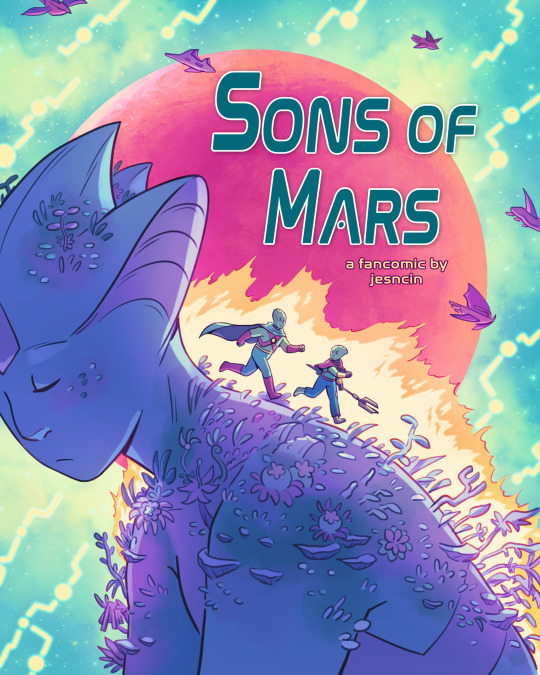
I put a lot of references into Sons of Mars and I thought it'd be fun to have a post detailing all the nods and research from the comics there are!
The title is a spin on the Martian Manhunter solo (written by John Ostrander and drawn by Tom Mandrake) collection title.


We pulled the idea of J'onn and Ma'al going on a pilgrimage as a form of revisiting their origin story from the first issue of the "Son of Mars" collection, Pilgrimage. This line is lifted more or less from the comic (we even wanted J'onn to be talking to Clark like he does in the source material).
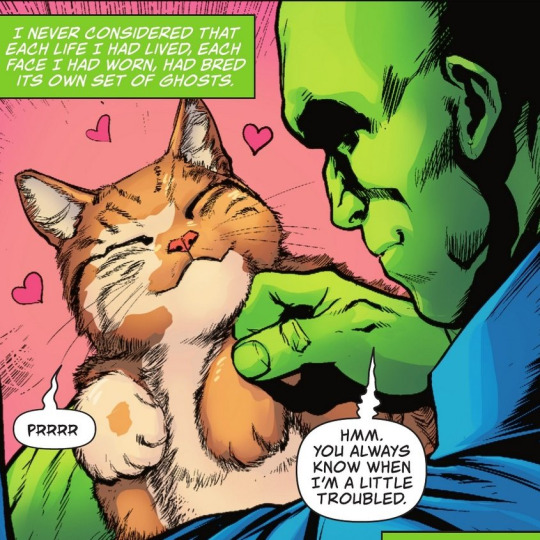
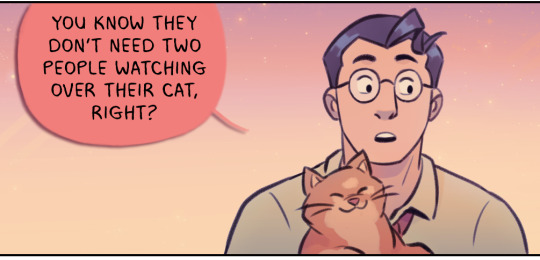
Double Stuff the cat is from Action Comics #1037 Martian Manhunter: A Face In The Crowd (written by Shawn Aldridge and art by Adrianna Melo)

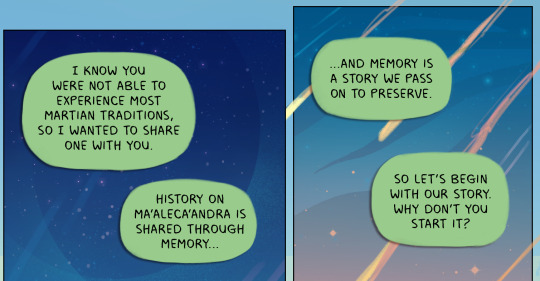
This line about memories being passed down as a form of history is from In my Life (pt 1) (written by Ostrander, drawn by Eduardo Barreto). We pulled most of J'onn and Ma'al's relationship from this comic, since it goes into a lot of detail about their origin.


The general look of Mars (from the martians to the environments) largely pull from Martian Manhunter 2019: Identity (written by Steve Orlando with art by Riley Rossmo). I really like that they clearly took their time to develop a unique visual language for Mars, especially the organic look of the buildings and the fun shapes of the spaceships. Rossmo does not get enough credit for creating such a fresh take on not only the environments but the martians as well! All the martians look unique and have different outfits, which we wanted to do as well!
Our only rule for the environment was that we didn't want any pyramids. Because ancient astronaut theory is racist garbo and I don't want it in my Martian worldbuilding!


This page with Sha'sheen and M'yrnn is a direct homage to their page from In my Life. Idk how it happened but the parents look very t4t in our version lol


Another homage to In my Life. I wanted to imitate the color scheme and the martian outfits here too.


More In my Life homages! This time it's the manhunter training montage.


Telescope romance scene is from MM 2019: Identity! The color scheme and the vibes were already great, I didn't change much haha. M'yri'ah's characterization, J'onn geeking out about other planets, and J'onn's parents' disapproval of M'yri'ah as a partner are all from Identity. I really liked how that story fleshed her out as a character.



I also based M'yri'ah's design off of her Identity true and public forms. I went for less pixar-mom hourglass shape and more buff and built since she's a fighter in our version. We wanted her to be as much a renaissance man as J'onn is often depicted as.
M'yri'ah refers to Earth as Thu'ulc'andra and Mars is referred to as Ma'aleca'andra in our comic. This is a continuation of Ostrander referencing CS Lewis' Space Trilogy for how martians named other planets. However! In Ostrander's version he named earth Per'elandra, which is what Venus is referred to in the Space trilogy. This was later changed via community poll by Orlando for Identity.
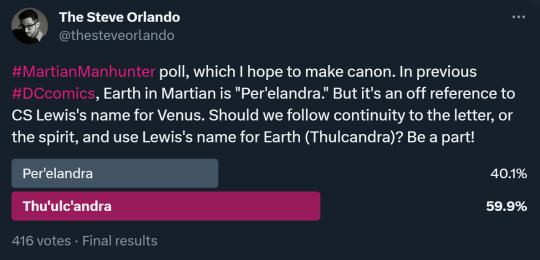
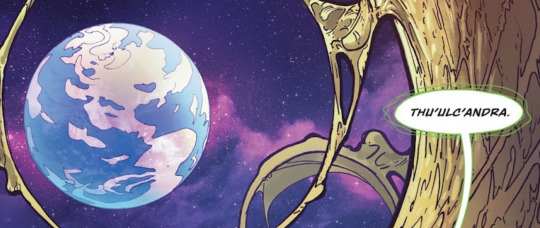

Kind of a homage to In my Life (pt3): Earthfall, but really I found an opportunity to continue the tradition of showcasing martian boinking that always happens in J'onn's origin story for some reason.

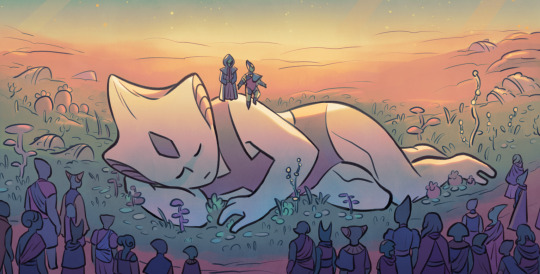
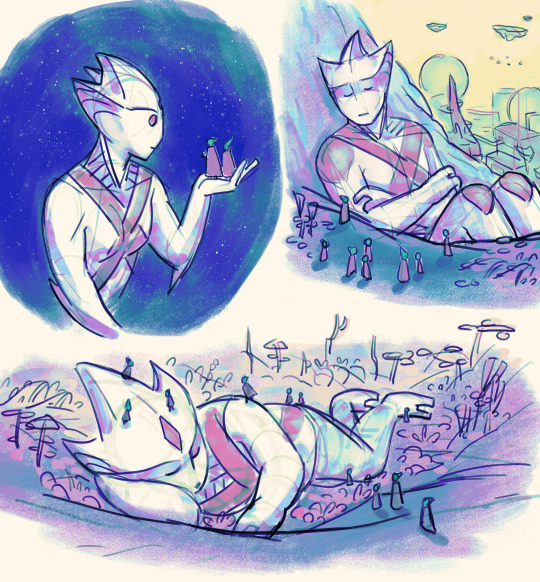
Not a Martian Manhunter reference, but more a new spin on White Martians. Inspired off of the Draag from the French film, Fantastic Planet. I love colossal set pieces~

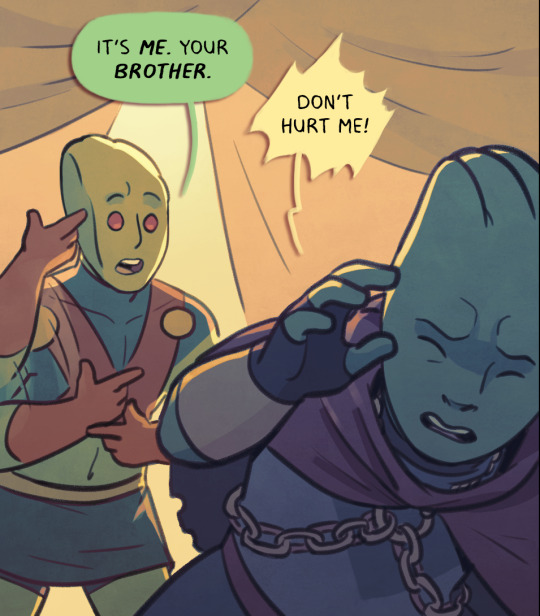
More In my Life parallels :>
That's all I can fit into one post for now! Pt 2 coming soon :)
Pt 1 | Pt 2 | Pt 3
#martian manhunter#sons of mars#dc comics#j'onn j'onzz#justice leauge#jlu#jl remix#ma'alefa'ak#ramblings#watch me geek out about martian comics
91 notes
·
View notes
Text
Often described as the world’s largest Buddhist monument, Borobudur rises from the jungles of central Java: a nine-leveled step pyramid decorated with hundreds of Buddha statues and more than 2,000 carved stone relief panels. Completed in 835 AD by Buddhist monarchs who were repurposing an earlier Hindu structure, Borobudur was erected as “a testament to the greatness of Buddhism and the king who built it,” says religion scholar and Borobudur expert Uday Dokras.
Though Buddhists make up less than one percent of Indonesia’s population today, Borobudur still functions as a holy site of pilgrimage, as well as a popular tourist destination. But for the Indonesian Gastronomy Community (IGC), a nonprofit organization dedicated to preserving and celebrating Indonesian food culture, Borobudur is “not just a temple that people can visit,” says IGC chair Ria Musiawan. The structure’s meticulous relief carvings, which depict scenes of daily life for all levels of ninth-century Javanese society, provide a vital source of information about the people who created it. Borobudur can tell us how the inhabitants of Java’s ancient Mataram kingdom lived, worked, worshiped, and—as the IGC demonstrated in an event series that ended in 2023—ate.
The IGC sees food as a way to unite Indonesians, but the organization also considers international gastrodiplomacy as a part of their mission. Globally, Indonesian food is less well-known than other Southeast Asian cuisines, but the country’s government has recently made efforts to boost its reputation, declaring not one, but five official national dishes in 2018. To promote Indonesian cuisine, the IGC organizes online and in-person events based around both modern and historical Indonesian food. In 2022, they launched an educational series entitled Gastronosia: From Borobudur to the World. The first event in the series was a virtual talk, but subsequent dates included in-person dinners, with a menu inspired by the reliefs of Borobudur and written inscriptions from contemporary Javanese sites.
In collaboration with Indonesia’s Ministry of Foreign Affairs and other partner organizations, the first meal in the Gastronosia series was, fittingly, held at Borobudur, with a small group of guests. The largest event, which hosted 100 guests at the National Museum in Jakarta, aimed to recreate a type of ancient royal feast known as a Mahamangsa in Old Javanese, meaning “the food of kings.” The IGC’s Mahamangsa appeared alongside a multimedia museum exhibition, with video screens depicting the art of ancient Mataram that inspired the menu and displays of historical cooking tools, such as woven baskets for winnowing and steaming rice. Another event, held at Kembang Goela Restaurant, featured more than 50 international ambassadors and diplomats invited by the Ministry of Foreign Affairs.
But how does one translate 1,000-year-old stone carvings into a modern menu that’s not only historically accurate, but appetizing? “We have to have this very wide imagination,” says Musiawan. “You only see the relief [depicting] the food…but you cannot find out how it tastes.” The IGC designed and tested a Gastronosia menu with the help of Chef Sumartoyo of Bale Raos Restaurant in Yogyakarta, and Riris Purbasari, an archaeologist from the Central Java Province Cultural Heritage Preservation Center, who had been researching the food of Borobudur’s reliefs since 2017.
The range of human activities depicted in the reliefs of Borobudur is so wide that it has inspired research in areas of study stretching from music to weaponry. There have even been seaworthy reconstructions based on the “Borobudur Ships” displayed on the site’s lower levels, exquisitely rendered vessels like the ones that facilitated trade in ancient Southeast Asia. So it’s no surprise that Borobudur has no shortage of depictions of food-related scenes, from village agricultural labor, to the splendor of a royal Mahamangsa, to a bustling urban marketplace. Baskets of tropical fruit, nets full of fish, and even some modern Indonesian dishes are recognizable in the reliefs, such as tumpeng, a tall cone of rice surrounded by side dishes, which is still prepared for special occasions. Some images are allegories for Buddhist concepts, providing what Borobudur archaeologist John Mikic called “a visual aid for teaching a gentle philosophy of life." Uday Dokras suggests that these diverse scenes might have been chosen to help ancient visitors “identify with their own life,” making the monument’s unique religious messaging relatable. The reliefs illustrate ascending levels of enlightenment, so that visitors walk the path of life outlined by the Buddha’s teachings: from a turbulent world ruled by earthly desires at the lowest level, to tranquil nirvana at the summit.
Musiawan says that the IGC research team combined information from Borobudur with inscriptions from other Javanese sites of the same era that referenced royal banquets. While Borobudur’s reliefs show activities like farming, hunting, fishing, and dining, fine details of the food on plates or in baskets can be difficult to make out, especially since the painted plaster that originally covered the stone has long-since faded. Ninth-century court records etched into copper sheets or stone for posterity—some accidentally uncovered by modern construction projects—helped fill in the blanks when it came to what exactly people were eating. These inscriptions describe the royal banquets of ancient Mataram as huge events: One that served as a key inspiration for the IGC featured 57 sacks of rice, six water buffalo, and 100 chickens. There are no known written recipes from the era, but some writings provide enough detail for dishes to be approximated, such as freshwater eel “grilled with sweet spices” or ground buffalo meatballs seasoned with “a touch of sweetness,” in the words of the inscriptions, both of which were served at Gastronosia events.
Sugar appears to have been an important component in ancient Mataram’s royal feasts: A survey of food mentions across Old Javanese royal inscriptions revealed 34 kinds of sweets out of 107 named dishes. Gastronosia’s Mahamangsa ended with dwadal, a sticky palm-sugar toffee known as dodol in modern Indonesian, and an array of tropical fruits native to Java such as jackfruit and durian. Other dishes recreated by the IGC included catfish stewed in coconut milk, stir-fried banana-tree core, and kinca, an ancient alcohol made from fermented tamarind, which was offered alongside juice from the lychee-like toddy palm fruit as an alcohol-free option.
Musiawan describes the hunting of animals such as deer, boar, and water buffalo as an important source of meat in ninth-century Java. Domestic cattle were not eaten, she explains, because the people of ancient Mataram “believed that cows have religious value.” While Gastronosia’s events served wild game and foraged wild greens, rice also featured prominently, a key staple in Mataram that forms the subject of several of Borobudur’s reliefs. It was the mastery of rice cultivation that allowed Mataram to support a large population and become a regional power in ninth-century Southeast Asia. Rice’s importance as a staple crop also led to its inclusion in religious rituals; Dokras explains that in many regions of Asia, rice is still an essential component of the Buddhist temple offerings known as prasad.
The indigenous Southeast Asian ingredients used in Gastronosia’s Mahamangsa included some still widely-popular today, such as coconut, alongside others that have fallen into obscurity, like the water plant genjer or “yellow velvetleaf.” Musiawan acknowledges that modern diners might find some reconstructed ancient dishes “very, very simple” compared to what they’re used to “because of many ingredients we have [now] that weren’t there before.” But in other cases, ninth-century chefs were able to achieve similar flavors to modern Indonesian food by using their own native ingredients. Spiciness is a notable example. Today, chillies are near-ubiquitous in Indonesian cuisine, and Java is especially known for its sambal, a spicy relish-like condiment that combines pounded chillies with shallots, garlic, and other ingredients. But in ancient Mataram, sambal was made with native hot spices, such as several kinds of ginger; andaliman, a dried tree-berry with a mouth-numbing effect like the related Sichuan pepper; and cabya or Javanese long pepper. “It tastes different than the chili now,” Musiawan says of cabya, “but it gives the same hot sensation.” Chillies, introduced in the early modern era by European traders, are still called cabai in Indonesian, a name derived from the native cabya they supplanted.
Gastronosia is just the beginning of IGC’s plans to explore Indonesian food history through interactive events. Next, they intend to do a series on the food of ancient Bali. By delving into the historic roots of dishes Indonesians know and love, the IGC hopes to get both Indonesians and foreigners curious about the country’s history, and dispel preconceptions about what life was like long ago. Musiawan says some guests didn’t expect to enjoy the diet of a ninth-century Javanese noble as much as they did. Before experiencing Gastronosia, she says, “They thought that the food couldn't be eaten.” But afterward, “They’re glad that, actually, it's very delicious.”
20 notes
·
View notes
Text











Lyrics: Robert Frost - Stopping by Woods on a Snowy Evening // Lord Byron - Childe Harold's Pilgrimage (There is a Pleasure in The Pathless Woods) // The Wolfgang Press - Cut The Tree // Marina Tsvetaeva - Poem of The End // Yehuda Amichai - Six Poems for Tamar // José Olivarez - Citizen Illegal
Art: Unknown Source // Bartolomeo Veneto - Saint Catherine Crowned (Detail) // Stephen Mackey - Datura & Butterfly // Unknown Source
11 notes
·
View notes
Text
I. part of "The Knight-Paladin Alphabet Headcanons"
I am creating headcanons for the Knight-Paladin Gelebor right here.
Warning, there will be NSFW ones too, though way later (they aren't there yet).
Here are a 2 letters from the first chapter:
G — Grief — How do they process grief?
It is said that Auri-El could do naught but teach the Elvenfolk to suffer with dignity.
This paraphrase might not completely fall in line with the Falmer doctrines of faith, but the theme of being ennobled by martyrdom is common, starting with the very initiation to enlightenment undertaken in the pilgrimages to the Chantry of Auri-El.
True to his beloved culture, perhaps even influenced by it, he tends to mourn quietly. The Knight-Paladin seldom weeps openly. He harbors no desire for pity, for he believes a guardian ought to remain silent about his own sorrows. To impose his emotions upon another strikes him not only as inappropriate but profoundly selfish.
Therefore, he does not showcase the level of hurt he's under — a subtle display of melancholy at most. To be exact, he refrains from presenting strong emotions whatsoever, whether they're positive, negative or ambivalent.
K — Knowledge — Do they like learning new things? Do they possess any piece of wisdom unknown to others, or is perhaps forbidden?
Needless to say, he possesses boundless knowledge of the old ways and Nirn from the dawn of the First Era, which would prove a miraculous source of information for today's scholars but probably not to anyone else. He is willing to share everything about the functioning of the Snow Elven Empire, Falmeri Pantheon, Falmereth’s traditions and convenances. He doesn’t necessarily have any forbidden knowledge, he has always strayed far from all wicked branches of magic (unlike him …).
He loves learning new things, always intently listening to any intel from adventurers if they would ever want to share a piece of their wisdom with him. The few books he took with him to the Darkfall Cave he reread countless times and on rare occasions a soul would graze him with new information about the outside world. Bit by bit, he learned of the change of the end of Atmorans’ active slaughtering of the Snow Elves, Chimer to Dunmer transformation, the disappearance of the Dwemer, the Oblivion crisis…
If the Dragonborn would allow him so, he would politely inquire about all interesting questions that would pop in his mind on a guard for centuries. To be frank, any new information would be fascinating to him. Socioeconomic news, geopolitical landscape, developments in technology, or something about culture and arts — all he will lap up with utmost attention.
There are, of course, certain facts he is better off without being aware of. He certainly would fare far more peacefully without being notified about the existence of such pieces of art like “The Slaying of the Falmer Princes” or “Conquest of the Falmer”... Only Auri-El knows how the stoic Knight-Paladin might react to those obscene literary works.
Lord, help him if he discovers Brynjolf’s gig as a salesman.
#gelebor#knight paladin gelebor#gelebor imagine#forgotten vale#snow elf#auriel#gelebor x reader#dawnguard#falmer
7 notes
·
View notes
Text
Uncovered: The Ninja Tales
3. Machinedrum - 3FOR82 (2024)
To complete our trilogy of ‘The Ninja Tales’, Part III takes a look at the hidden spot gloss ASCII artwork for Travis Steward's aka Machinedrum’s 11th studio album, 3FOR82 out on Ninja Tune on 24th May 2024. It is reported that Stewart crafted the album during a pilgrimage to Joshua Tree National Park, California, to seek clarity and inspiration, saying, “..I knew that I should, at some point in my life, go out there to work on something creatively.”

Fascinated by the outwardly simple artwork that, in reality has many hidden depths, we caught up with graphic designer and Machinedrum's Creative Director, Joseph Durnan and Ninja Tune’s Head of Production, Sean Preston to understand more about the process for creating the album’s hidden code artwork using The Demoscene. For us mere mortals unfamiliar with The Demoscene, it is an international computer art subculture made up of a worldwide network of creative minds, focused on producing demos: self-contained, sometimes extremely small, computer programs that produce audiovisual presentations.
Joseph told us, “One component we latched onto early was the Demoscene's challenge of keeping file sizes as low as possible while maximising the complexity of the demos. ASCII art, halftoning, and duotone degrading helped express that idea, with legendary demoscener TPOLM's art and Travis' (Machinedrum) personal artefacts from his teenage years acting as source material. The words flooding the sleeve and hidden code are nods to personal messages within Demoscene culture—references to in-jokes, cryptic sayings and messages to other demo makers. I liked how this type of content could either seem conceptual and esoteric to an outsider, or something between total gibberish and a confusing nerdy joke. Blending this with the 3FOR82 process involved using personal numbers related to birth dates, in-studio references among the album collaborators, and redundant information about the WAV files for the album tracks.”


Accompanying the record is a 16-page boutique zine. Joseph explains, “The accompanying zine goes deeper into the archival aspect, including rules from a quest-style video game imagined by Machinedrum as a child and a transcript from his first-ever interview. It also features nostalgic cyber-culture-style artwork contributions from Sensory Works and bitmapped photos from studio shoots with Tinashe and AK the Saviour.”
The limited edition translucent yellow glow vinyl edition, includes an alternative Dinked album art oversleeve and Joseph told us more about this, “For the limited edition Dinked art, TDR's Ian Anderson "3FOR82" font was degraded via an online ASCII art converter, overlaid with the T-26 font "Bias” for the MACHINEDRUM type. The font non-coincidentally looks good with Ian's logotype because a lot of the T26 foundry's typefaces made their way into his designs in the 90s and early 00s - which is widely held up as an era defining body of work within that world. Something definitive of the visual language of electronic music was how much of the artwork developed with technology, mirroring the way the Demoscene visuals have mutated over the past 30 years.”


Ninja Tune’s Head of Production, Sean Preston worked alongside Durnan on the album artwork and gave us his insight into the creative process.
He told us, “I think if anyone else other than Joe had come to me with the premise for the latest Machinedrum album I would’ve done all I could to put them off, but having suffered under the designer’s collaboration for several years, I was all too aware of his penchant for ASCII art, glitchy graphics, and secret gifts/traps buried deep within pixel data for me to find. Sometimes, where you land with the final packaging on a record, is more pleasing or rewarding because of the pitfalls laid before it, most of which in this instance we couldn’t have known ahead of the course.”
Sean explains, "Initially pencilled for manufacture in Ireland, we had to pivot to printing some of the sleeves there, stickers, zine booklet and o-card (for the Dinked edition) in three separate locations in the UK, and pressing the vinyl in France. The danger in working that way is that most printers have their own calibration settings for sleeves and o-card sizes. It also presents a risk to hitting colour consistency across the print parts. Getting printers to talk about these things with each other isn’t always a harmonious of fruitful pursuit, but with a good amount of physical proofing, some nervy stress tests, the record comes together really well.”


We asked more about the 16 page zine insert and Sean explained, “The zine booklet, complete with French folds, feels like a real artefact, centring the artwork’s ambition on an uncoated offset paper and card. The outer sleeve is 6-colour, utilising a bright Pantone Green and Pantone Orange against a CMYK composite, overlaid with a blind spot varnish. A blind varnish is a varnish that doesn’t necessarily correspond to the colour artwork it is printed on. Often when you see this, the blind varnish is vibrant, blind only in name, and usually employed as large block text, which requires a certain level of legibility. I visited the printer near Dublin specifically to get the right amount of subtlety to the overlaid varnish. Because of the miniscule, dotted areas occupied by the varnish, the traditional method of varnishing wasn’t going to give us the fine detail desired. The beauty of working with the sort of printer we did (AngloPrinters in Drogheda, around 45 mins north of Dublin) is that they are experienced and agile enough to recognise intention and move to solutions that benefit the artistic purpose. The finished sleeve now holds a finely detailed varnish that is present in light, but subtle enough to maintain the overall clandestine aesthetic that pervades the album’s artwork and music.”

youtube

3FOR82 by Machinedrum is released on Ninja Tune on 24th May 2024. Artwork by Joseph Durnan [124 World]. Typography by Ian Anderson (The Designers Republic). Record FlipFrames by Art Vinyl.
#art vinyl#album cover art#digital art#record cover#machinedrum#ninja tune#graphic design#ascii art#demoscene#artanddesign#uncovered
8 notes
·
View notes
Text
New at IPR: Velvet Generation!
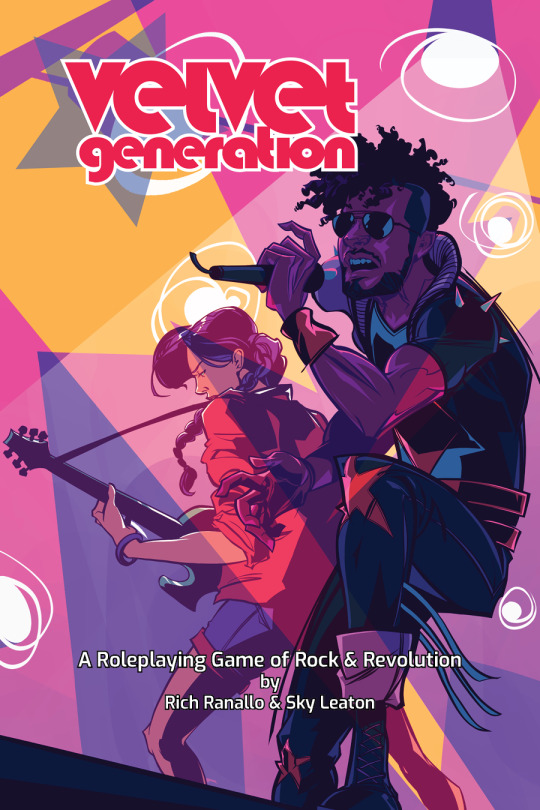
The year is 2073.
A century ago, radio transmissions from Earth passed through a strange ripple in space, causing rock music to fall upon the mystified ears of an alien world. For five glorious years, the aliens grew to love the planet they believed to be on the other end of that beautiful signal. When the music cut off as mysteriously as it began, the aliens embarked on a generational pilgrimage to discover the source of the music.
Nearly a century later, the aliens have arrived, but Earth is not what they expected. Humanity has taken a dark turn, silencing music, the arts, literature…any kind of expression they believed could inspire “dangerous” thoughts. The Ministry of Music looms large over the entire world, stamping out rebellious culture with steel-sheathed jackboots.
With nowhere to go but forward, the Starchildren descended, joining the few Earthlings still carrying a spark of rock and roll. They catalyzed a new rock & roll revolution that will break the Ministry’s chains on the soul of humanity.
This is the Velvet Generation.
https://www.indiepressrevolution.com/xcart/Velvet-Generation-softcover-Print-PDF.html
14 notes
·
View notes
Video
Basilique Sainte-Thérèse de Lisieux par Frédéric Poirier
Canon EOS R / 24-105mm F4 DG OS HSM Art
62.0 mm / ƒ/8.0 / 1/200 / ISO : 100
Visite de la Basilique Sainte Thérèse de Lisieux
in English below
La Basilique Sainte-Thérèse de Lisieux est un édifice religieux catholique situé à Lisieux, dans le département du Calvados, en Normandie (France). Elle est dédiée à Sainte Thérèse de Lisieux, une religieuse française canonisée en 1925.
La basilique a été construite entre 1929 et 1954, dans un style romano-byzantin, et mesure 107 mètres de long et 35 mètres de large. Elle est considérée comme l’une des plus grandes églises catholiques du XXe siècle.
La basilique abrite le tombeau de Sainte Thérèse de Lisieux, qui y est enterrée depuis 1925. Elle est également le centre de pèlerinage de la ville de Lisieux, qui attire chaque année plus de 150 000 pèlerins. Les visiteurs peuvent accéder au dôme de la basilique, qui offre une vue panoramique sur la ville de Lisieux et la campagne environnante. La basilique abrite également un musée consacré à la vie de Sainte Thérèse, ainsi qu’un cinéma qui diffuse un film sur sa vie.
Les visiteurs peuvent également visiter la crypte de la basilique, qui est décorée de mosaïques représentant la vie de Sainte Thérèse. La crypte est également le lieu de repos de plusieurs religieux et religieuses de l’ordre carmélite. Pour monter jusqu'en haut il nous a fallu monter 500 marches nous a-t'on dit... Je ne les ai pas compté personnellement mais mes jambes s'en sont rappelé toute la nuit...
Visit to the Basilica of Saint Thérèse of Lisieux
The Basilica of Sainte-Thérèse de Lisieux is a Catholic religious building located in Lisieux, in the Calvados department, in Normandy (France). It is dedicated to Saint Thérèse of Lisieux, a French nun canonized in 1925.
The basilica was built between 1929 and 1954, in a Roman-Byzantine style, and measures 107 meters long and 35 meters wide. It is considered one of the largest Catholic churches of the 20th century.
The basilica houses the tomb of Saint Thérèse of Lisieux, who has been buried there since 1925. It is also the pilgrimage center of the city of Lisieux, which attracts more than 150,000 pilgrims each year. Visitors can access the dome of the basilica, which offers panoramic views of the city of Lisieux and the surrounding countryside. The basilica also houses a museum dedicated to the life of Saint Thérèse, as well as a cinema which shows a film about her life.
Visitors can also tour the basilica's crypt, which is decorated with mosaics depicting the life of Saint Teresa. The crypt is also the resting place of several monks and nuns of the Carmelite order.
To get to the top we had to climb 500 steps, we were told… I didn't count them personally but my legs remembered them all night…
Photo : Frédéric Poirier
Source : flic.kr
#Basilique#Normandie#Lisieux#SIGMA 24-105MM F/4 DG OS HSM ART#24-105MM F/4 DG OS HSM ART SIGMA#Canon EOS R#flickr
9 notes
·
View notes
Photo

Ally: Dhruva, The Celestial Brightsmith
However brilliant you think my work might be, remember that I learned my craft at the feet of those who wrought entire worlds from the void with nothing but their hope and intent. I adore them as all students adore their masters, as a candle must adore the dawn
Wondrous weapons made of some radiant material have begun appearing in exotic markets and the hands of the party’s foes, allowing their bearers to transform into intangible colour while in motion or sear through the flesh of creatures made of dream. This raises the question of just where these weapons originated and how the party can get their hands on them, leading to a journey across the planes which culminates in a visitation with a most extraordinary artisan.
Where they once forged weapons for heavenly legions, the celestial Dhruva has spent several eons perfecting an art of capturing, channelling, and tempering light they refer to as “brightsmithing”, which they now hope to propagate across the multiverse. They do this in dedication to the starry goddess Urania, as the process of creating a “lightwrought” weapon requires one to seek out and bask in the vivid brilliance of the cosmos, which is in itself a form of prayer to the little known goddess.
Pilgrimages across the infinite are all well and nice, but the actions of the celestial smith are inadvertently at risk of kicking off an arms race as the various factions and free agents of the cosmic sea scramble for this new power. Will the party turn this upheaval to their advantage, or will the chaos convince them that mortalkind is not yet ready for such gifts? Will they even care so long as they can get cool glowing weapons from the kindly space angel?
Adventure Hooks:
The Brightsmith is just the entity you want to talk to if you need a peerless weapon to take down an untouchable rival, a tyrant, or a hostile celestial body. The construction of such a weapon will of course take expenditure on the party’s part, sourcing the materials from dangerous reaches, journeying out into the cosmos to capture just the tight light, and most importantly of all, convincing Dhruva their cause is just. Given that they’re a being made of mortality, The celestial is unlikey to be swayed by selfish arguments, and the heroes might need to do some soul searching before they earn their shiny new toy.
Dhruva’s forge is a tiny world unto itself, constructed by the celestial over millennia of trial and error as they refined the process of brightsmithing from a theory into an actual craft. As such, beneath the surface there seem to be an endless gallery of disused workshops, vaults, and armouries full of failed experiments. Occasionally they’ll need someone to pop down into one of the forgotten lower levels and bring them something, necessitating the party fight through constructs, plasma elementals, and the sort of shadowy void creatures that feed upon light.
On a subsequent visit to Dhruva’s forge, the party end up encountering another traveller, begging for Dhruva to take him back as an apprentice and show him the true secrets of brightsmithing. After banishing the newcomer, Dhruva will tell the party of his fallen apprentice who had a real talent for the art but sought to rationalize the process by cutting out the spiritual elements in an attempt to mass produce light based weapons. As the campaign goes on, the party will encounter some of these “falselight” weapons in the hand of villains, a pale imitation of a true lightwrought weapon, but affordable for your average merc or pirate.
Mechanic: Brightsmithing
Like all talented artisans, those who which to create lightwrought weapons need superior materials in order to realize their aims, the same way that a master smith wouldn’t use the same metal to construct nails as they would a sword.
To this end, brightsmiths make use of special crystalline prisms that can drink in light over a matter of time to later be extracted by the smith with the use of special lenses and mirrors. Prisms typically resemble a colorless piece of rock-quartz with a starry sparkle about their edges, and as brightsmithing propagates throughout a setting it’s not unusual to see travlers, sailors, and adventurers all carrying these stones (or atleast fragments of them).
There are two sorts of prisms: Stable and Volatile, each ranked along the same rarity access of regular magic items.
Stable Prisms need to soak in the specified light in order to abzorb its properties, requiring a total of 24 hours of exposure to a specific arrangement of light in order to gain a charge. Once that charge has been used to create a lightwrought item, this prism is reusable, though the rarity of the item produced will always be one step in rarity below that of the stable prism itself
Volatile Prisms are fast acting, requiring only a minute of exposure in order to develop a charge. This speed comes with several downsides, in that the prism is single use and must be stored in dark conditions lest it drink in the ambient light of a room spoiling its potential. The charge of a volatile prism is always equal to that of an item of its rarity.
The other thing brightsmiths need, obviously, is light: the more potent the better, thought what exactly determines the potency of light is highly subjective, relating to any number of factors:
The light is part of a display that could be considered uniquely beautiful
The character trapping the light is feeling some level of personal poignancy, associating it with a strong memory or emotions
the source of the light is volatile or dangerous
Few have seen the source of this light in living memory
there is something primal, divine, or otherworldly about the source
For every factor a source of light matches, the charge it generates in a prism is counted as one level of rarity (starting from common) to a max of the rarity of the prism.
When given over to a capable brightsmith, a charged prism counts as the raw materials required for an item of the corresponding level, with the particular quality and source of the light determining a thematic link with the item to be crafted.
Lightwrought weapons by default also deal magical radiant damage in addition to their other types, making them a sought after alternative for expensive enchanted weapons when dealing with those beats of the astral sea that might be resistant or outright immune to mundane steel
#clestial#ally#mid level#mystery#black market#pirates#bandits#D&D 5e homebrew#homebrew#homebrew mechanic#dnd#dungeons and dragons#d&d#5e#spelljammer#astral#magic item
229 notes
·
View notes
Note
Okay but the bottle you posted in response to the other anon is a rose water sprinkler, as talked about in the second source I sent you

“Due to the lack of handles and tubes, it can hardly be referred to as
a sprinkler. In Iranian myths, it is known as Ashkdan - a
container for tears - in which saline liquids are poured into
and stored. The story is that when the husbands - the Qajar
kings - went on a long journey for business or pilgrimage
for a long time, the wives would cry in husbands’ absence
so that they could prove their love” -Corbani et al 2006
Ashkdans have had different functions in different
periods: in the Safavid period, as a carafe for storing
beverages or vases, in the Qajar period, as a means to
show true love, and in later periods, due to the influence
of superstitions, as a container to store teardrops to
show loyalty to religion. Interestingly, there are no
traces of the word Ashkdan in any of the encyclopedias,
historical sources, and literary works up to the Qajar
period.
By analysing the form of Ashkdan, we can say that
Ashkdan is influenced by the Venetian glass art, and
now is known as the representative of the Safavid
glassmaking art with a decorative role, that has
obtained the symbolic title of Ashkdan (tear container)
merely based on historical narrations and myths.
The visual features of this form connecting with the
Iranian audience led to its recognition over time as a
representative of Iranian glass art in most museums
around the world.
anon, with all due rapidly decreasing respect, hop off my dick and stop acting like white europeans fetishizing and appropriating the middle east somehow invalidates actual reality of middle eastern historical legacy. bye
51 notes
·
View notes
Photo







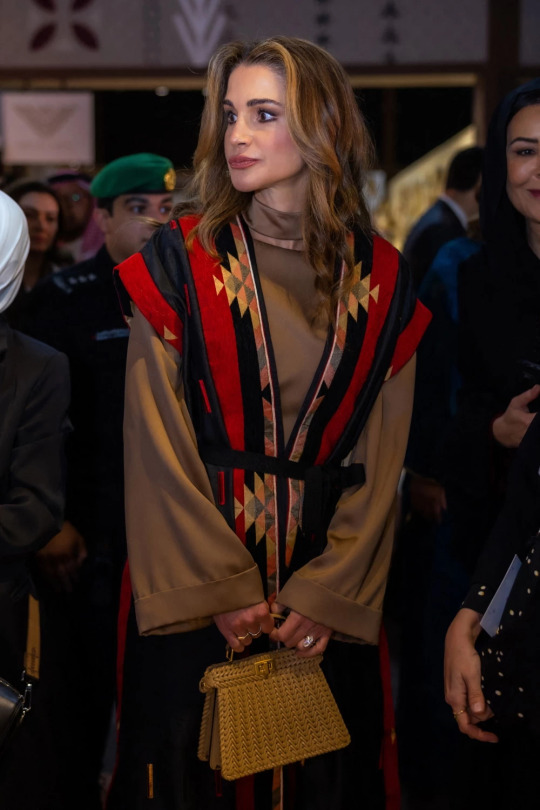
27 March 2023: Queen Rania attended the opening of Bisat Al Reeh’s 22nd annual exhibition at the Jeddah Superdome, held under the patronage of Princess Adelah bint Abdullah bint Abdulaziz Al Saud.
The Princess is the Chairwoman of the National Charity Foundation for Home Healthcare (NHHCF) “We Care” Board of Trustees, and the exhibition’s proceeds go towards funding programs under the NHHCF, which aim to provide medical care for those in need.
Held over a period of six days, Bisat Al Reeh is part of Saudi Arabia’s Ramadan events organized by the Saudi Ministry of Culture, and is host to more than 170 local and regional participating entities from over 15 countries. (Source: Petra)
Welcoming Her Majesty, President of Bisat Al Reeh Exhibition and Vice President of the National Charity Foundation for Home Healthcare “We Care”, Abeer Qabbani, stated that the Queen’s attendance lends great significance to the exhibition and emphasizes its global reach, which is evident in a strong international participation in this year’s iteration.
Alongside 150 participants from across the globe, Jordan River Designs made its debut as a vendor this year, with a display of handcrafted heritage items.
Participants at this year’s exhibition will showcase a variety of home and lifestyle products including home accessories, jewelry, food products, and fashion items.
Setting itself apart as one of the most popular events in the kingdom, the exhibition, whose opening was attended by a number of prominent invitees, boasts a series of activities that allows visitors to interactively browse the displays and artwork.
Later that evening, Her Majesty also visited the inaugural Islamic Arts Biennale in Jeddah produced by Diriyah Biennale Foundation, a nonprofit organization established in 2020 by the Ministry of Culture.
CEO Aya Al Bakree gave Her Majesty a tour of the Biennale, which hosts over 300 works of art. These include 40 pieces created by international institutions and over 200 heritage items produced locally that feature a number of valuable historical artifacts from the Two Holy Mosques.
Themed ‘Awwal Bait’, meaning First House in reference to the Holy Ka’bah in Mecca, the first edition of the Islamic Arts Biennale features over 60 established and emerging artists from around the globe, over 60 new commissions, 280 artifacts, and over 15 never-before-exhibited works of art.
While in Saudi Arabia, Queen Rania will also travel to Mecca to perform the Umrah pilgrimage and hold an Iftar banquet for a number of Jordanian women who are part of Her Majesty’s Ramadan Umrah mission consisting of 500 women from across Jordan.
34 notes
·
View notes
Text

Berenguela de Barcelona
She was a very beautiful and extremely graceful young girl who loved chastity and truth and all God-fearing people.
Berenguela was the daughter of Ramon Berenguer III, Count of Barcelona and his third wife Dolça I de Gévaudaun, Countess of Provence. Although her date of birth is unknown, the sources place it between 1108 and 1116. It is known that Berenguela had a good relationship with her older sister, María de Osona, who was the daughter of the first marriage of her father with María Rodríguez, the daughter of El Cid Campeador.
In 1128 Berenguela married Alfonso VII, King of León, Castile and Galicia. She becoming the first queen of the newly reigning dynasty of the House of Ivrea. In 1135, Alfonso VII was crowned “Emperor of Spain” (Imperator totius Hispaniae) in the Cathedral of León. The imperial couple had seven children, of whom Sancho III was King of Castile and Fernando II King of León. The daughters, Constanza and Sancha, became Queens consorts of France and Navarre.
Historians who have dedicated to studying her life consider that Berenguela de Barcelona was one of the characters who deserves a privileged position in the history of Spain. She actively participated in political life and was patroness of the arts. She accompanied her husband in the battles, stopped the uprising in Asturias and heroically resisted the besieged of Toledo by the Muslims. She also introduced a taste for Provencal troubadours to the kingdom, supported writers who narrated the exploits of El Cid and encouraged pilgrimages to Santiago de Compostela, where she was buried in 1149.

Berenguela nació en el prestigioso y rico condado de Barcelona como hija del conde Ramón Berenguer III y de su segunda esposa Dulce de Provenza. La joven barcelonesa destacó por su inteligencia y gran belleza, llegando su fama hasta la corte del rey Alfonso VII de Léon, Castilla y Galicia, hijo de la legendaria reina Urraca. Al parecer fue un noble, Armengol de Urgel, quien le facilitó los trámites para entrar en contacto con los condes de Barcelona. El rey de León tenía poco más de veinte años y no estaba casado, ni siquiera había ninguna candidatura seria para un matrimonio, que tarde o temprano tendría que celebrarse.
Una vez prometida al rey Alfonso VII, Berenguela de Barcelona emprendió un largo viaje. Desde Barcelona hasta la corte de su futuro marido, debía cruzar los dominios del rey aragonés Alfonso el Batallador, quien estaba en disputa con Castilla por cuestiones territoriales y fronterizas. Para evitarlo, Berenguela y su comitiva tuvieron que hacer parte del viaje por el sur de Francia, llegar hasta el Golfo de Vizcaya y fletar unas barcazas que, bordeando la costa cantábrica, les permitieran desembarcar en un puerto controlado por los leoneses.
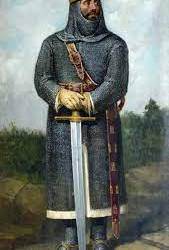
A finales de 1128 o enero de 1129, los prometidos contraían matrimonio en la villa de Saldaña. Con motivo de las celebraciones de los esponsales, que duraron varios días, se dice que tuvo lugar la primera corrida de toros celebrada en la Península. La pareja imperial tuvo siete hijos, destacándose Sancho III de Castilla y Fernando II de León. La joven reina forjó una gran amistad con su cuñada la infanta Sancha Raimúndez, llegando a ser ambas las principales consejeras de Alfonso VII. Berenguela participó en la política de forma activa, fue la principal responsable de apagar la rebelión del conde de Asturias Gonzalo Peláez y acompañó a su esposo a la guerra en muchas ocasiones, participando así de sus victorias.
En 1135 tuvo lugar la coronación de Alfonso VII como Imperator totius Hispaniae en la catedral de León, gran parte de los nobles presentes en el acto habían llegado gracias a los contactos de la reina y su familia; así su hermano Ramón Berenguer IV, Armengol de Urgel, el conde Alfonso Jordán de Tolosa, el de Montpellier, el duque de Gascuña, el de Foix y otros grandes señores del Sur de Francia. A ella, entonces, cupo el gran honor de ser la Emperatriz consorte de Hispania.

Nos dice la crónica de Alfonso VII que en 1139 la reina Berenguela fue la responsable de una heroica resistencia en Toledo. Habiendo partido su marido al sitio del castillo de Aurelia, encargó a su esposa la defensa de la ciudad. Pero la campaña se alargó demasiado y Toledo fue sitiada por las tropas musulmanas. Berenguela reunió un pequeño ejército, pero, consciente de su inferioridad, decidió intentar una jugada diplomática para tratar de evitar la lucha. Indignada por la destrucción de la torre de San Servando, cercana a la ciudad, Berenguela envió un mensajero con una carta al campo enemigo que decía lo siguiente:
"¿No conocéis que es mengua de caballeros y capitanes esforzados acometer a una mujer indefensa cuando tan cerca os espera el emperador? Si quereis pelear id a Aurelia y allí podréis acreditar que sois valientes, como aquí dejar demostrado que sois hombres de honor si os retiráis".
La reina Berenguela apareció además sentada sobre un trono real en una de las torres, rodeada de sus doncellas, que cantaban con tímpanos, cítaras, címbalos y salterios. Los musulmanes quedaron impresionados por la nobleza de la reina y levantaron inmediatamente el cerco, marchando a luchar contra Alfonso. Cuando el alcaide de Toledo, Nuño Alfonso, entró victorioso en la ciudad portando las cabezas de los emires de Sevilla y Córdoba, las mandó colgar de las torres del alcázar, pero la reina se apiadó, ordenando que las embalsamaran y enviaran a sus viudas en cofres de oro. Una torre en Toledo (la Torre de la Reina) recuerda la gesta de la reina Berenguela.
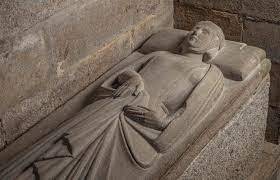
Berenguela es recordada como una prudente reina que sacrificó sus sentimientos dando prioridad a los intereses de la corona. Cuando de las infidelidades de su esposo con la noble asturiana Gontrodo Pérez nació una hija, doña Urraca, la reina perdonó a su esposo y quiso ganárselo mediante el cariño. Aún más, cuando Urraca casó con el rey de Navarra García el Restaurador, la reina Berenguela se encargó de preparar los esponsales con gran pompa y asistió, dando gran realce a la ceremonia. Mujer culta, Berenguela fue una gran mecenas y amante de las artes, a ella se debe el impulso de la poesía provenzal en el reino, apoyó a escritores que narraban las hazañas del Cid y fomentó el peregrinaje a Santiago de Compostela, donde fue enterrada. Su muerte fue muy lamentada, tanto que, según los historiadores de la época, el año 1149 fue usado en los documentos como punto de partida para fechar los acontecimientos, bajo la fórmula "año en que falleció la señora emperatriz".
#Berenguela de Barcelona#Berenguela Berenguer#Berengaria of Barcelona#Spanish history#women in history#Alfonso VII
25 notes
·
View notes
Text
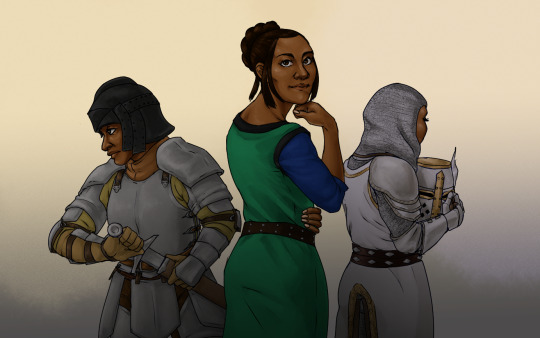
Oadalupe
She/Her
Redguard
Late 20's
Birthsign: The Lady
Primary Attributes: Endurance and Willpower
Primary Skills: Armorer, Athletics, Block, Blunt, Heavy Armor, Mysticism, Restoration
Secondary Skills: Alchemy, Blade
Titles: Hero of Kvatch, Grandmaster of the Fighter's Guild, Divine Crusader
Born to a retired Forebear warrior and a Cyrodiilic priest, it seemed natural for Oadalupe to become an Aspirant of the Kynarian Order of her home city of Rihad. Her gentle nature seemed at odds with her martial prowess at first, but her faith in the Divines served as an anchor for her contrasting roles of healer and fighter.
Over time she grew more and more curious of her father's culture and homeland. Rihad and its Forebear Redguards embraced much of Imperial culture, but in the end it was still through a Redguard lens. She decided the time came to learn more of Tava as Kynareth and set out for the city of Anvil to the south.
She remained in the city for some time, the local chapel of Dibella serving as a base and the Fighter's Guild hall a source of income while she established herself in the province. Shortly after making a name for herself, she continued her pilgrimage so as to not overstay her welcome or become prideful and complacement.
Her next destination would be the nearby city of Kvatch and its chapel of Akatosh. Little did she know her previous trials were only preparation for the horrors ahead.
Bonus art and commentary after the break

Some day I'll come up with a hair for post-game/KotN, which doesn't exist because I could never get that far on her saves lol
So my OG followers will know this character as the one I first created here on tonglr dot net, and will also know how fragile her saves were. I don't think I've ever made it to the end of a playthrough before the save ended up corrupted, but I guess there's always the future.
Anyways, not sure whether I go with that spelling for her name or the original "Guadalupe". I figure it's more...lore friendly? to go with Oada instead of Guada given there's no Spain analogue in-universe except maybe Wayrest? But that's far away from Rihad so lol
#elder scrolls#oblivion#redguard#my art#my characters#ngl i think the black and gold dress works better on her#but it's not really in character for her to be flashy#idk i just think maybe i should have picked a better dress but that's what i remember her wearing as civvies lol#also yes i know her primary weapon skill is blunt but i drew her with a sword#i just liked the pose when i drew it so i kept it lol
6 notes
·
View notes